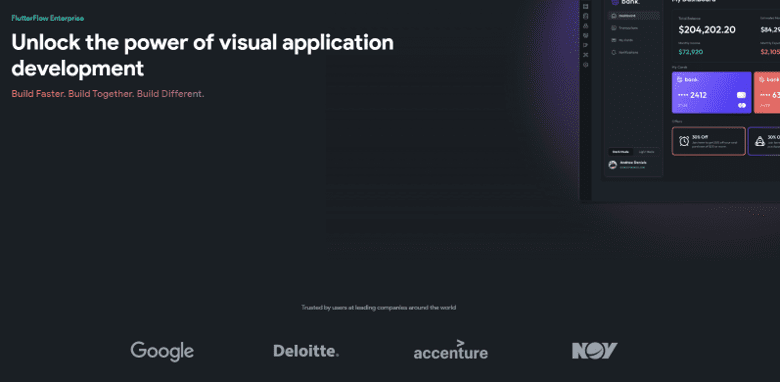No Code Platform Disadvantages Can Be Limiting
No code app? More like no good app!
We’re kidding – but for some founders, there may come a time when your software outgrows even the best no code app builders.

When your app has outgrown the no code app builders, migrating to a different platform becomes challenging due to the lack of compatibility between different vendors’ systems, potentially leading to data loss, downtime, and significant rework.
As a result, while no-code platforms offer accessibility and ease of use, users must carefully consider the long-term implications of vendor lock-in before committing to a particular platform.
And if we were you, we’d want as much advance notice as possible instead of getting caught with our pants down.
And so in this post, we’ll be taking a look at:
- Three signs a no code app or SaaS has outgrown no code development
- Four steps you can take in response
Let’s begin.
First Sign: You Need Out-of-the-Box Features
Using no code means working with templates made up of someone else’s code.
No code platforms often comes with inherent limitations, particularly in terms of flexibility.
These platforms often impose predefined templates, design patterns, and functionality constraints, restricting the extent of customization and innovation that developers can achieve.
When you try to do something not in that template, you’re asking the code to do something it’s not meant to do – that can sometimes work.
And sometimes you simply outgrow templates provided by no code app builders.
Let us show you screenshot of a thread from the nocode subreddit from a founder.

It’s a long one as you can see, but here’s a summary of the original poster’s situation:
- The Original Poster (OP) had minimal coding experience and used Bubble to connect to YouTube’s API to track view count and revenue for a video he made.
- He struggled to make it work with Bubble’s pre-built solutions, leading to a mental breakdown
- The birth of his child suddenly inspired him to learn Python.
- It turned out Python was way easier and OAuth libraries simplified authentication.
- OP learned Python basics in a few days, wrote his own script for YouTube API, and realized coding is less mentally taxing than using no-code platforms for unique tasks.
The more niche you need to go, the closer you inch towards custom development.
Yes, no code app builders often allow for some customization, but never to the degree of custom code.
Second Sign: High Usage Crashes Your App’s Performance
Back to Reddit, where It’s common to raise the issue of slow performance and get replies like these:

And they could be right, but is that really something you want to risk?
Especially when your app deals with:
- High data volume
- High numbers of simultaneous users
- Highly complex processing
- All of the above
It’s not possible to quantify exactly what ‘too much volume’ or ‘too complex’ is – it truly depends on your app.
in the example below, the no-code app struggled to keep up with 15 thousand records – and the creators eventually had to transition to custom code.

And burned 1.3 million dollars along the way.
Third Sign: High Potential for Enterprise Clients
Given the choice, some founders really want to serve enterprise clients as they tend to be higher-ticket leads and clients.
But enterprise clients come with:
- compliance requirements
- shareholders
- corporate governance and
- a need to project security, integrity, quality, and modernity
In other words, it’s the difference between having Elon Musk or Yi Long Ma as a client.

All this is to say that while enterprise clients pay well, they expect their money’s worth
And that can make a no code solution less attractive to them because of its lower customization ceiling compared to custom software development where the limit is the developer, not the framework.
Look at no code app builders with corporate clients like Bubble, FlutterFlow, and Plasmic.
Were they built with no code? (spoiler: no)

In fact, these no code app builders go out of their way to provide additional features and attention for bigger (richer) enterprise clients.
Look, we’re not saying custom code guarantees enterprise clients will fall into your lap.
But no code solutions will always be limited customization-wise compared to custom code, and enterprise clients greatly value having solutions tailored to their specifications.
4 Options When Your App Reaches the Ceiling of No Code
Do Nothing!
Assuming there’s no risk of losing users, you could just shift your app to permanent maintenance mode, where it neither grows nor shrinks – homeostasis.
There’s really no question at this point if no code apps and SaaS can be profitable products.
And not everyone wants to build massive apps or chase millions in revenue.
So if you’ve built a modestly profitable no code solution and want it to stay lean, we see nothing wrong with it.
Plus now you can make a new app and call yourself a serial entrepreneur on LinkedIn!
Move to More Powerful No Code App Builders
If you’ve been using an app builder that advertises ‘user-friendliness’ instead of extensive functionality, you might not be at the limit of no code app development at all.
Instead, you could have just outgrown your current no code app builder.
Simpler platforms like GoodBarber, Glide, and Wized have their place, but most founders eventually graduate to more robust options such as:
Or any of the no code app builders that offer more customization.
And while you’re at it, beyond just what you can do with the pre-built components, go for a no code app builder that allows you to import custom code.
Hire a Developer and Go Custom
We’d only recommend hiring an app developer if you already have decent recurring revenue and/or want to begin approaching enterprise clients.
There are two decisions to make when it comes to engaging developers:
- Freelancer vs agency, and
- Local vs offshore
And in theory, these decisions exist on a continuum of cost savings vs risk.

We mentioned recurring monthly revenue would be nice because it doesn’t really matter which of these choices you go with – the cost of custom app development will always be higher than no code alternatives.
Hiring offshore developers is no different from hiring locally – the higher risk simply means you can’t afford to compromise.
If you’re worried and can afford it, hire locally.
This way, if they give you a rubbish code, drive to their house and beat them up.
Kidding! We’d just serve them a court injunction.
Learn How to Code
Ever since the first cavemen learned to walk upright, non technical founders have been asking whether they should learn to code.
And the developer community has been consistently saying the same thing:
No.
While coding can be a valuable skill with numerous practical applications, it may not be advisable for everyone to learn coding due to various factors.
Firstly, learning to code requires a significant time investment and dedication, which may not align with everyone’s interests or career goals.
Additionally, coding can be complex and challenging, leading to frustration and discouragement for individuals who may not enjoy problem-solving or working with intricate systems.
Moreover, not all professions or fields require coding expertise, so investing time in learning to code may not always provide a substantial return on investment for everyone.
Unless you’re building a really technical product with a technical target audience, you as a founder don’t really need to know anything about coding.
But sometimes you can’t afford a developer, and can’t find a technical co-founder.
Case in point: Adam Wan who learned to code and built his own SaaS.

He was convinced his product was a winner.
He was also the ONLY one convinced his product was a winner.
What else are you gonna do?
Conclusion: Outgrowing No Code Is GOOD!
We’ve always said the best use case for no code is fast and cost-effective MVPs.
So ideas that make it to the custom development stage are already proven.
So if your no code app begins getting enough traction that the Bubbles and Flutterflows of the world can no longer reliably host or extend it, perhaps it’s time to consider custom development.
And hey, you can always do nothing!
Hey there stranger, thanks for reading all the way to the end. Consider joining our mailing list for a one-stop resource on everything from micro SaaS validation all the way to execution and promotion. Get a nifty list of questions to ask app developers when you sign up!
Download this template now so you know exactly what to ask App Development Agencies! Let us know where should we send it through the form below.







